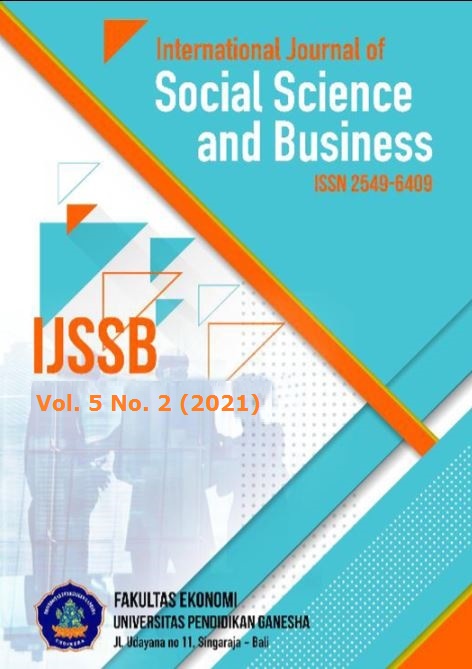Application of Artificial Intelligence as Evidence in Indonesian Courts
DOI:
https://doi.org/10.23887/ijssb.v5i2.36185Keywords:
Artificial Intelligence, Evidence, CourtAbstract
Artificial Intelligence is one of the technologies that exist in the world and can resemble humans while Artificial Intelligence can do what humans actually do such as Learning, Planning, Critical Thinking, Problem Solving, and many more. Because of this, some states use it in court. Artificial Intelligence uses it as evidence to prove multiple cases and makes it easier for prosecutors, judges and lawyers to work. This study aims to examine the application of Artificial Intelligence as evidence in courts in Indonesia. This research is a literature review research. Data collection is carried out by reviewing the literature related to the application of Artificial Intelligence as evidence in courts in Indonesia. Various information was collected from various sources such as books, papyrus, articles, research reports, and so on. Various information that has been collected is then reviewed, formulated, analyzed, and outlined in writing. Data collection is done by using documentation techniques, namely by reading, reviewing, studying, and noting the essence of the literature. The results show that in Indonesia there is no law on Artificial Intelligence so it will be difficult to use it in court as evidence because according to several sources in the procedural law there are some legal evidence that can only be used in court. However, crimes that occur in Indonesia are usually related to technology, so all governments must form a law on Artificial Intelligence.
References
Alarie, B., Niblett, A., & Yoon, A. H. (2018). How artificial intelligence will affect the practice of law. University of Toronto Law Journal, 68(1), 106–124. https://doi.org/10.3138/utlj.2017-0052
Atiyah, F., & Izzah, L. (2019). A comparative study on the effectiveness of using direct and audiovisual methods for enhancing students listening comprehension. English Language in Focus (ELIF), 2(1), 1–12. https://doi.org/10.24853/elif.2.1.9-
Badri, L., & Salehi, M. (2017). The effect of oral authentic materials on Iranian efl learners’ motivation and listening comprehension ability. International Journal of Instruction, 6(2), 312–322. https://jte.sru.ac.ir/article_730.html
Bennett Moses, L. (2017). Artificial intelligence in the courts, legal academia and legal practice. Australian Law Journal, 91(7), 561–574. https://papers.ssrn.com/sol3/papers.cfm?abstract_id=3742515
Bhattacharyya, E. (2018). Stakeholders perspective on communicative competence in industry 4.0: Walk the talk of informative technologists. Les Ulis: EDP Sciences. https://doi.org/10.1051/shsconf/20185303001
Butow, P., & Hoque, E. (2020). Using artificial intelligence to analyse and teach communication in healthcare. Breast, 50, 49–55. https://doi.org/10.1016/j.breast.2020.01.008
Hamzah, A. (2019). Metode Penelitian Kepustakaan: Kajian Filosofis, Teoretis, dan Aplikatif. Literasi Nusantara.
Hang, N. P. T., Thuy, L. T., & Tam, P. T. (2018). Impacting the industry 4.0 on the training quality and student’s satisfaction at lac hong university. Journal of Management Information and Decision Sciences, 21(1), 1–18.
Hildebrandt, M. (2020). The Artificial Intelligence of European Union Law. German Law Journal, 21(1), 74–79. https://doi.org/10.1017/glj.2019.99
Lichtman, M. (2013). Qualitative Research in Education (3rd ed.). SAGE Publications.
Munir, & Nudirman. (2017). Pengantar Hukum Siber Indonesia. Raja Grafindo Persada.
Putra, D. N. R. A. (2018). Hukum Acara dan Praktik Peradilan Perdata. Prenada Media Group.
Rahmad, A., & Riadi. (2019). Hukum Acara Pidana. Rajawali Pers.
Relling, A. . (2020). Courts and Artificial Intelligence. International Journal For Court Administration, 8. https://doi.org/10.36745/ijca.343
Rodrigues, R. (2020). Legal and human rights issues of AI: gaps, challenges and vulnerabilities. Journal of Responsible Technology, 100005. https://doi.org/10.1016/j.jrt.2020.100005
Rusyadi. (2016). Kekuatan Alat Bukti Dalam Persidangan Perkara Pidana. Jurnal Hukum PRIORIS, 5(2). https://media.neliti.com/media/publications/81115-ID-kekuatan-alat-bukti-dalam-persidangan-pe.pdf
Sugiyono. (2015). Metode Penelitian Pendidikan pendekatan Kuantitatif, Kualitatif dan R&D. Alfabeta, Bandung.
Ward, I. (2009). A Critical Introduction to European Law (3rd ed.). Cambridge University Press.











